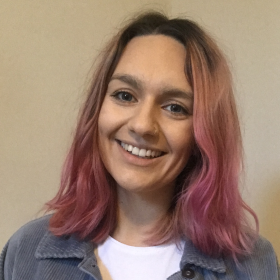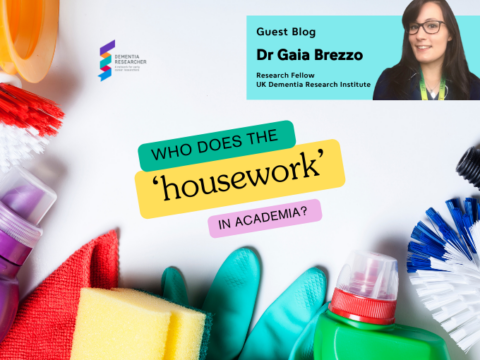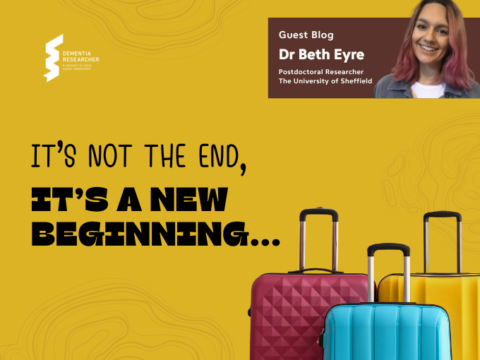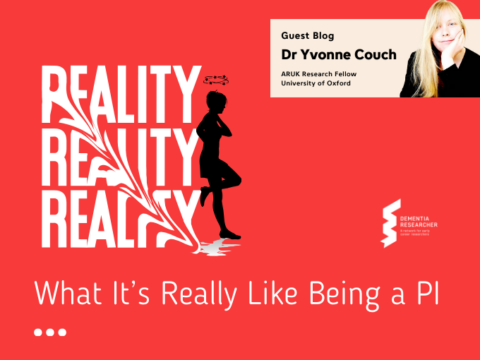I know I’ve done a few blogs about opportunities (outside of your research) for graduate students, but I feel the role of an ISTAART ambassador needs a whole blog for itself. It probably sounds super cheesy but being an ISTAART ambassador has been one of the best things I’ve done throughout my PhD. And I want to make sure as many of you hear about it as possible, so that you can apply and hopefully also have an amazing experience as an ambassador! So, this month’s blog is going to be an insight into my experience as a ISTAART ambassador, where I’ll reflect on some of the things I’ve gained from being an ambassador so far.
If you’ve not heard of ISTAART before then let me give you a little bit of info – it stands for the International Society to Advance Alzheimer’s Research and Treatment. The whole point of the society is to bring together the global community of dementia researchers, professionals and clinicians, to network, collaborate and advance our knowledge of dementia. Joining the society (which did I say was free for students?) can give you lots of benefits (too many for me to fit into this blog), but one of the major benefits (in my opinion) is access to the twenty-nine professional interest areas or PIAs for short. The PIAs are groups of individuals with similar interests, where the most up to date research can be shared, and collaborations can be initiated.
A developing programme ISTAART introduced this year is the year-round ambassador role. This role not only includes volunteering throughout AAIC but also involves the ambassadors spreading the word about ISTAART through giving presentations during the rest of the year!
After the whirlwind of AAIC (and a week break to recuperate) I decided to sit and reflect on the whole experience of attending such a large conference and my role as an ISTAART ambassador throughout. And I managed to whittle down my experience and especially what I gained from the experience into the three C’s: Confidence, Community and Connections.
Confidence
As I mentioned one of our responsibilities as ISTAART ambassadors is to spread the word far and wide about ISTAART and one of the ways we do this is by giving short presentations. Presentations are a funny one, because in academia we can’t really avoid them – at some point we have to do one or two despite not always enjoying them. The experience of giving a presentation about something that was not science was a relatively new experience for me – and it definitely helped me gain confidence regarding giving talks like this!
Another part of our role as ISTAART ambassadors at AAIC was to either be a chair or attendee supervisor. This meant that we had to talk to lots of people. And with the chair supervisor role this meant we also had to speak and liaise with many academics. This for me was one of the best parts of the conference, getting to introduce myself and talk about their work and my future plans. I think one thing I’ve definitely taken from my role as an ISTAART ambassador is the confidence to now go up to other academics, especially ones giving talks. As an early career researcher, it can be super daunting approaching people in the field, but what this role showed me is that these people are just people, they are normal human beings and actually most of them really enjoy chatting with early career researchers!
I asked other ISTAART ambassadors about their own experiences too and Holly Ingram from the USA told me that:
“AAIC fostered an atmosphere of inspiration that helped me find the confidence I’m on the right path to pursuing a career in neurodegenerative medicine. As a first-generation student, I am filled with gratitude to be an ISTAART ambassador and have the opportunity to learn from clinicians and researchers across the world”
Community
One thing that I’m sure many students can resonate with is how HARD it has been to make friends and meet other PhD students over the past few years. However, put 26 ambassadors from all over the world, who all have one thing in common – an interest in dementia research, as well as making them spend long days together and support each other throughout the week you can be pretty sure that some strong bonds will form. It was such privilege to get to work with all of the ambassadors in person. It was so wonderful to be part of a community of like-minded individuals, each one of us had something really unique we brought to the role and that was really special. It was awesome to hear about everyone’s experiences with their own research – as it’s sometime easy to surround yourself with people who only do the same work as yourself! I love how now I have friends all around the world. One thing I really love about the scheme is that as it’s now a year-long programme it means we can all continue to work with each other, having our monthly meetings and hopefully seeing each other at other conferences too!
Connections
In our meetings prior to attending AAIC as ambassadors we heard on a number of occasions that the purple shirt has power. And they certainly were right. Not only did I make connections with other ambassadors but I was able to make connections with a number of lab groups who work on similar things to myself. AAIC is a great conference to establish new connections. Connections can be established through the PIAs, where you can virtually meet and work with people and then meet them in person at the conference. But I do feel that by being an ISTAART ambassador you are able to take advantage of the purple shirt and the exposure this gives you, which allows you to create even more connections! I spoke with so many researchers, about my work but also about the role as an ISTAART ambassador. I know a number of people have created connections and are starting to establish collaborations, and I know of at least one of us who got a post-doc job all from attending AAIC. I’m not the only ambassador who found the experience beneficial, Lizzie English, a fellow ambassador for the UK told me that:
“AAIC provided me with a unique opportunity to meet dementia researchers from across the world, helping me build strong, new international friendships and collaborations”
When I think about it there is so much more I gained from attending AAIC and being an ISTAART ambassador but that’s too much for this blog. If you are at all interested in the role/just want to know more about ISTAART then there are plenty of us to ask! So, feel free to reach out – you can contact me on twitter or Instagram. So now you’ve read what you may be able to gain from becoming an ISTAART ambassador I’m sure you’re wondering okay well how can I become one? Well, I know it’s a while away but applications will open around January/February, so keep your eyes peeled for updates! But in the meantime, join ISTAART, get involved with the PIAs, and take advantage of the many opportunities that come with being a member!

Beth Eyre
Author
Beth Eyre is a PhD Student at The University of Sheffield, researching Neurovascular and cognitive function in preclinical models of Alzheimer’s disease. Beth has a background in psychology, where she gained her degree from the University of Leeds. Inside and outside the lab, Beth loves sharing her science and we are delighted to have her contributing as a regular blogger with Dementia Researcher, sharing her work and discussing her career.

 Print This Post
Print This Post




